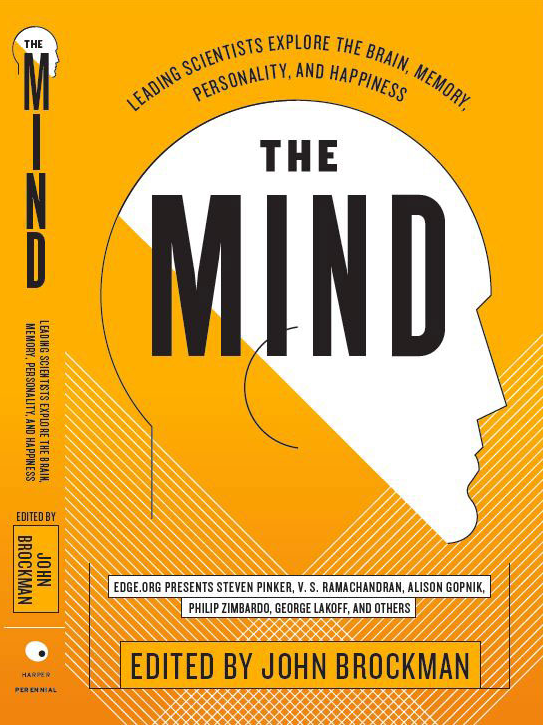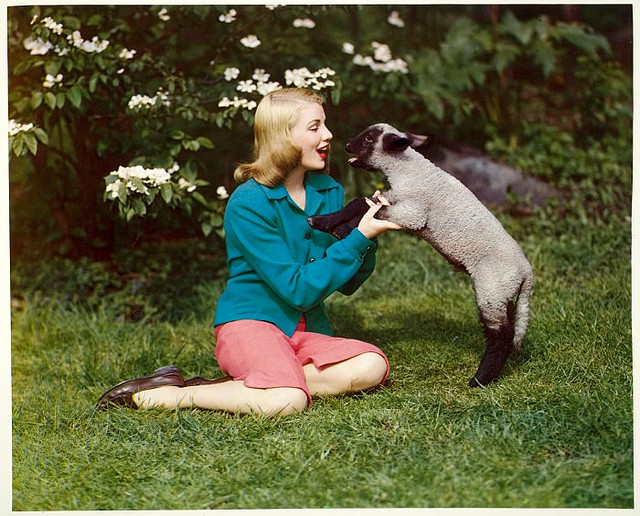15 Years of Cutting-Edge Thinking on Understanding the Mind
by Maria Popova, brainpickings.orgSeptember 13th 2012 8:11 PM
by
What mirror neurons have to do with Abu Ghraib, the science of religion, and how happiness flourishes.
 For the past 15 years, literary-agent-turned-crusader-of-human-progress John Brockman has been a remarkable curator of curiosity, long before either “curator” or “curiosity” was a frivolously tossed around buzzword. His Edge.org has become an epicenter of bleeding-edge insight across science, technology and beyond, hosting conversations with some of our era’s greatest thinkers (and, once a year, asking them some big questions.) Last month marked the release of The Mind, the first volume in The Best of Edge Series, presenting eighteen provocative, landmark pieces — essays, interviews, transcribed talks — from the Edge archive. The anthology reads like a who’s who of Brain Pickings favorites across psychology, evolutionary biology, social science, technology and more. And, perhaps equally interestingly, the tome — most of the materials in which are available for free online — is an implicit manifesto for the enduring power of books as curatorial capsules of ideas. Brockman writes in the book’s introduction:
For the past 15 years, literary-agent-turned-crusader-of-human-progress John Brockman has been a remarkable curator of curiosity, long before either “curator” or “curiosity” was a frivolously tossed around buzzword. His Edge.org has become an epicenter of bleeding-edge insight across science, technology and beyond, hosting conversations with some of our era’s greatest thinkers (and, once a year, asking them some big questions.) Last month marked the release of The Mind, the first volume in The Best of Edge Series, presenting eighteen provocative, landmark pieces — essays, interviews, transcribed talks — from the Edge archive. The anthology reads like a who’s who of Brain Pickings favorites across psychology, evolutionary biology, social science, technology and more. And, perhaps equally interestingly, the tome — most of the materials in which are available for free online — is an implicit manifesto for the enduring power of books as curatorial capsules of ideas. Brockman writes in the book’s introduction:
While there’s no doubt about the value of online presentations, the role of books, whether bound and printed or presented electronically, is still an invaluable way to present important ideas. Thus, we are pleased to be able to offer this series of books to the public.”
Here’s a small sampling of the treasure chest between The Mind’s covers:
In “Eudaemonia: The Good Life” (2004), Martin Seligman, father of positive psychology whom you might recall as the author of Flourish and Learned Optimism, one of our 7 essential books on optimism, explores what he calls the “third form of happiness,” which lies in:
knowing what your highest strengths are and deploying those in the service of something you believe is larger than you are. There’s no shortcut to that. That’s what life is about. There will likely be a pharmacology of pleasure, and there may be a pharmacology of positive emotion generally, but it’s unlikely there’ll be an interesting pharmacology of flow. And it’s impossible that there’ll be a pharmacology of meaning.”
In “Moral Psychology and the Misunderstanding of Religion” (2007), psychologist Jonathan Haidt (whose The Happiness Hypothesis you might recall as one of our 7 favorite books on happiness) notes:
[I]t might seem obvious to you that contractual societies are good, modern, creative, and free, whereas beehive societies reek of feudalism, fascism, and patriarchy. And, as a secular liberal I agree that contractual societies such as those of Western Europe offer the best hope for living peacefully together in our increasingly diverse modern nations (although it remains to be seen if Europe can solve its current diversity problems). I just want to make one point, however, that should give constructualists pause: surveys have long shown that religious believer s in the United States are happier, healthier, longer-lived, and more generous to charity and to each other than are secular people.”

In “Amazing Babies” (2009), psychologist and philosopher Alison Gopnik laid the foundations for her The Philosophical Baby, one of this year’s must-read books by TED Global speakers:
We’ve known for a long time that human children are the best learning machines in the universe, but it has always been like the mystery of the hummingbirds. We know that they fly, but we don’t know how they can possibly do it. We could say that babies learn, but we didn’t know how.”
Harvard’s Steven Pinker, whose illuminating insights on violence and human nature you might recall and who penned one of our 5 favorite books on language, wrote in “Organs of Computation” (1997), long before the hype of contemporary quasi-sciences like neuromarketing:
Most of the assumptions about the mind that underlie current discussions are many decades out of date. [L]ook at the commentaries on human affairs by pundits and social critics. They say we’re ‘conditioned’ to do this, or ‘brainwashed’ to do that, or ‘socialized’ to believe such and such. Where do these ideas come from? From the behaviorism of the 1920s, from bad cold war movies from the 1950s, from folklore about the effects of family upbringing that behavior genetics has shown to be false. The basic understanding that the human mind is a remarkably complex processor of information, an ‘organ of extreme perfection and complication,’ to use Darwin’s phrase, has not made it into the mainstream of intellectual life.”

Stanford social psychologist Philip Zimbardo, best-known for the infamous Stanford Prison Experiment and most recently a founder of the Heroic Imagination Project, drew on his seminal work exploring good and evil in “You Can’t Be a Sweet Cucumber in a Vinegar Barrel” (2005):
When you put that set of horrendous work conditions and external factors together, it creates an evil barrel. You could put virtually anybody in it and you’re going to get this kind of evil behavior. The Pentagon and the military say the Abu Ghraib scandal is the result of a few bad apples in an otherwise good barrel. That’s the dispositional analysis. The social psychologist in me, and the consensus among many of my colleagues in experimental social psychology, says that’s the wrong analysis. It’s not the bad apples, it’s the bad barrels that corrupt good people. Understanding the abuses at this Iraqi prison starts with an analysis of both the situational and systemic forces operating on those soldiers working the night shift in that ‘little shop of horrors.’”
Iconic neuroscientist V. S. Ramachandran, whose empirical quest for the what makes us human we recently examined, wrote in his seminal 2000 essay “Mirror Neurons and Imitation Learning as the Driving Force Behind ‘the Great Leap Forward’ in Human Evolution”:
The discovery of mirror neurons in the frontal lobes of monkeys, and their potential relevance to human brain evolution — which I speculate on in this essay — is the single most important ‘unreported’ (or at least, unpublicized) story of the decade. I predict that mirror neurons will do for psychology what DNA did for biology: they will provide a unifying framework and help explain a host of mental abilities that have hitherto remained mysterious and inaccessible to experiments.”

And in his second essay, “The Neurology of Self-Awareness” (2007), which laid the foundations for his The Tell-Tale Brain, Rama pondered the essence of the self:
What is the self? How does the activity of neurons give rise to the sense of being a conscious human being? Even this most ancient of philosophical problems, I believe, will yield to methods of empirical science. It now seems increasingly likely that the self is not a holistic property of the entire brain; it arises from the activity of specific sets of interlinked brain circuits. But we need to know which circuits are critically involved and what their functions might be. It is the ‘turning inward’ aspect of the self — its recursiveness — that gives it its peculiar paradoxical quality.”
A coffer of cutting-edge contemporary thought, The Mind contains the building blocks of tomorrow’s history books — whatever medium they may come in — and invites a provocative peer forward as we gaze back at some of the most defining ideas of our time.
Images via Flickr Commons
Original Page: http://www.brainpickings.org/index.php/2011/09/13/john-brockman-the-mind-edge-series/
Shared from Read It Later
Comments
Post a Comment